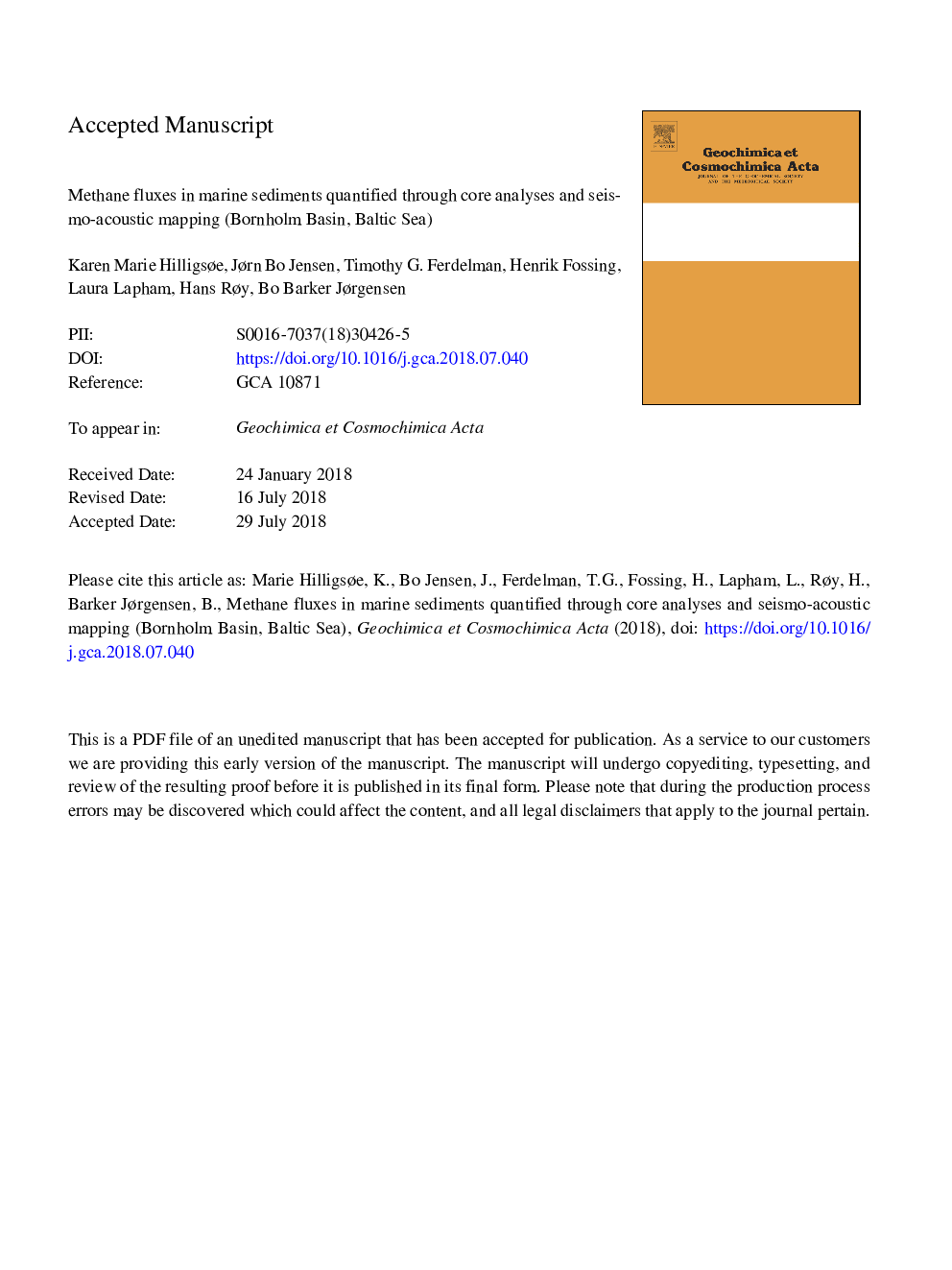| Article ID | Journal | Published Year | Pages | File Type |
|---|---|---|---|---|
| 8910575 | Geochimica et Cosmochimica Acta | 2018 | 41 Pages |
Abstract
Methane is a terminal product of anaerobic degradation of organic matter in subsurface marine sediments depleted of reactive oxidants. The depth and age of the sediment where sulfate is depleted determines the extent of methane production relative to the burial of organic carbon. We aimed to understand how this methane production is controlled and distributed in an apparently uniform sediment basin. We combined seismo-acoustic surveys and geochemical analyses of sediment cores to explore the distribution of methane fluxes in brackish-marine mud deposits of the Bornholm Basin, southern Baltic Sea. Geophysical mapping revealed the depth distribution of (a) the thickness of the Holocene organic-rich mud layer overlaying organic-poor Postglacial clay, and (b) the upper boundary of methane gas bubbles trapped in the Holocene sediment. By correlating these two parameters with the methane distributions in sediment cores from 44 stations we developed algorithms to estimate and map, at high spatial resolution, the diffusive methane fluxes in the 75-95-m deep and >4000â¯km2 large Bornholm Basin. The two approaches, termed the FGD (Free Gas Depth) model and the HML (Holocene Mud Layer) model, yielded similar budgets for the total upwards methane flux through the sediment column in the Bornholm Basin, about 17 ton methane C dayâ1. Complete sulfate depletion at depth, and thus onset of methane production, required a minimum threshold thickness of the Holocene mud layer of 4â¯m. Although the Bornholm Basin has an even depth contour and uniform surface sediments, methane production was strongly focused in hotspots where the HML has greatest thickness. This heterogeneity could not be predicted from bathymetry or from properties of the surface sediment but was related to the topography of the glacial landscape buried underneath the Holocene mud blanket. This demonstrates the importance of including seismo-acoustic mapping of subsurface stratigraphy for the interpretation and geographic extrapolation of sediment core data for biogeochemical processes such as methane production and methane flux. The two approaches, which were here combined for the first time, may thereby be applied to map methane production also in other coastal and shelf sediments with shallow gas and distinct Holocene deposits.
Keywords
Related Topics
Physical Sciences and Engineering
Earth and Planetary Sciences
Geochemistry and Petrology
Authors
Karen Marie Hilligsøe, Jørn Bo Jensen, Timothy G. Ferdelman, Henrik Fossing, Laura Lapham, Hans Røy, Bo Barker Jørgensen,
